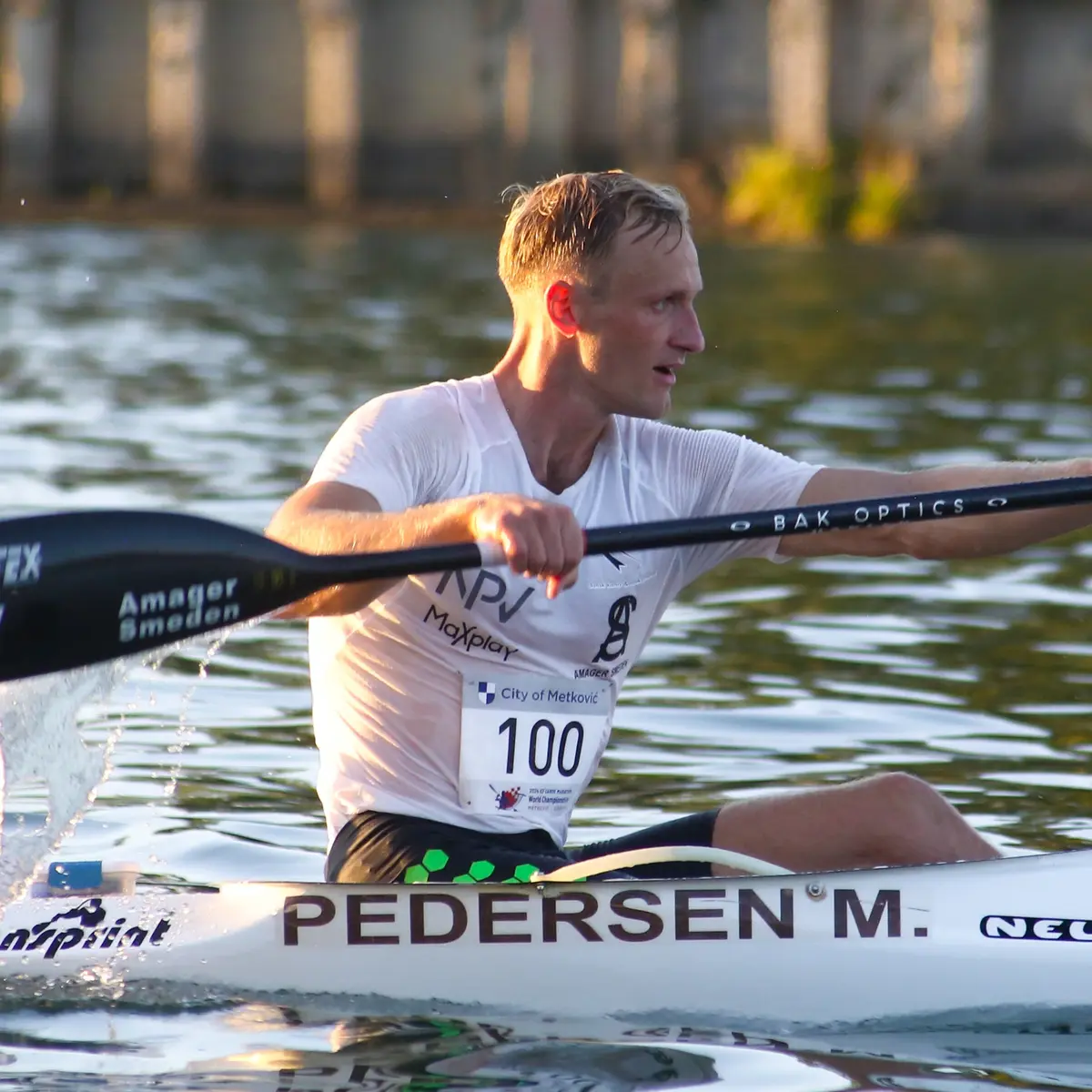
Mads Pedersen
ECA Canoe Marathon European Championships
Mads' headline numbers
Mads' strategy
Fueling
Carbohydrate is the main fuel you burn when racing. Failing to fuel properly is a leading cause of underperformance in longer races.
Ahead of the afternoon race start, Mads made sure to consume two carb-rich meals throughout the morning to top up his glycogen stores. Since working with the Sports Science team, Mads has been gradually increasing his carbohydrate intake during training and races to support higher intensity efforts. In this race, he hit his highest intake yet at ~58g/h. This was a big step forward, made possible by upping his consumption of PF Carb & Electrolyte Drink Mix to ~1.5L. Not only did he tolerate the higher intake with zero stomach issues, but he also reported very high energy levels across the race, proving the strategy was a successful and needed move. Mads originally planned to take his third and final bag of PF Carb & Electrolyte Drink Mix at the fourth portage, but mid-race dynamics changed as he started to pull away from the group. Fortunately, he reached the fifth stop ahead of schedule, allowing him to grab the final bag and stay on track with his fueling strategy.
Hydration
Taking on board an appropriate amount of fluid and sodium is essential to maintaining blood volume and supporting the cardiovascular effort needed to perform on race day.
Whilst the absolute amount of sodium and fluid consumed per hour is important, it’s critical to consider these in relation to each other. This is known as 'relative sodium concentration' and it’s expressed in milligrams per litre (mg/L). How much sodium you’re taking in per litre of fluid is more important than the absolute amount taken in per hour.
Mads adopted a similar strategy to the Canoe Marathon World Cup two months prior to this race. He picked up 500ml drink bags of PF Carb & Electrolyte Drink Mix from on-course portages, illustrating his coupled approach to fuel and hydration. Because of the 8℃ warmer weather in Denmark compared to the World Cup in Prague, Mads increased his fluid intake by finishing all three of these bags compared to two and a half previously. Finishing his third bag meant he took on a greater total amount of sodium, but because he used PF Carb & Electrolyte Drink Mix, he kept the relative sodium concentration of this fluid inline with the average sweat sodium concentration we see in our Sweat Test database to replace a decent proportion of his losses over the two hour race.
Caffeine
Beyond the Three Levers of Performance (carb, sodium and fluid), caffeine is one of only a few substances that is proven to improve performance for most endurance athletes as it can help stave off mental and physical fatigue.
Mads had a caffeine shot containing 100mg of caffeine two hours before the start, and then a PF 30 Caffeine Gel in the final 30 minutes pre-race, achieving the level of caffeine in his blood to ~2.3mg/kg at the time of starting. This will have provided some performance benefits by reducing perceived fatigue, increasing mental alertness and improving muscle force output, but evidence suggests these effects could be optimised by further increasing his dosage to 3-6mg/kg.
How Mads hit his numbers
Here's everything that Mads ate and drank on the day...
Mads' weapons of choice
Final thoughts
Mads' full stats
Data Confidence?
There is good confidence in the accuracy of the data reported. An athlete feels that the numbers closely reflect what they consumed despite a couple of estimations which may carry some degree of error. The majority of what was consumed is recorded to a high level of specificity (most volumes are known through the use of bottles brands quantities flavours). The numbers are very plausible and align with previous data recordings (if an athlete has collected data previously).